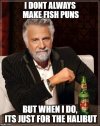-
Please take a moment and update your account profile. If you have an updated account profile with basic information on why you are on Air Warriors it will help other people respond to your posts. How do you update your profile you ask?
Go here:
Edit Account Details and Profile
You are using an out of date browser. It may not display this or other websites correctly.
You should upgrade or use an alternative browser.
You should upgrade or use an alternative browser.
Ship Photo of the Day
- Thread starter Randy Daytona
- Start date
Max the Mad Russian
Hands off Ukraine! Feet too
Ha, that boat in 1981 really had one nuke torpedo aboard, and one political officer (XO for polit affairs) in wardroom and it is far from clear which one was more dangerous since it was he on OOD watch who lost the position and ran aground. Since such Foxtrots had often had names like "Komsomolets of X" where X stands for some USSR region and though this boat had no given name, she was immediately dubbed Komsomolets of SwedenYeah, fish farts weren't the only things the Swedes were chasing.
Fascinating news. Explorers have verified the discovery of the USS Johnston, sunk in the epic battle described in the book “Last Stand of the Tin Can Sailors.”
Max the Mad Russian
Hands off Ukraine! Feet too
sunk in the epic battle described in the book “Last Stand of the Tin Can Sailors.”
Thanks. Though I think the last stand of DD guys was Okinawa kamikaze storm against DD radar watch.
The term is from a book by James D. Hornfischer. It is a great read.Thanks. Though I think the last stand of DD guys was Okinawa kamikaze storm against DD radar watch.
The last British wooden first rate 3 deck ship of the line, HMS Victoria. Commissioned in 1859, she was the largest warship in the world and mounted 121 guns:
Gun deck: (32 x 8") cast iron, smoothbore, muzzleloading firing a 50 lb shell out to 3,300 yards
Middle gun deck: (30 x 8")
Upper gun deck: (32 x 32 pdrs)
Quarter deck: (26 x 32 pdrs, 1 x 68 pdrs)
Powerplant: In addition to sails, HMS Victoria had 1 steam engine producing 4,400 HP through a single shaft giving a top speed of 11.8 knots on trials - the fastest 3 decker in the world (actually tied with the French ship Bretagne)
Length: 260 ft, Beam: 60 ft, Displacement: 6,959 tons. Crew: 1,000 (not a typo)
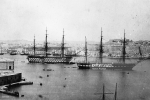
HMS Victoria and HMS Phoebe in 1859
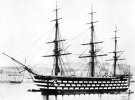
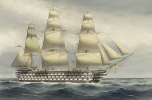
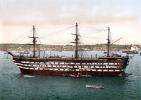
Sister ship HMS Howe which was never completed as a warship but became a training ship.
Gun deck: (32 x 8") cast iron, smoothbore, muzzleloading firing a 50 lb shell out to 3,300 yards
Middle gun deck: (30 x 8")
Upper gun deck: (32 x 32 pdrs)
Quarter deck: (26 x 32 pdrs, 1 x 68 pdrs)
Powerplant: In addition to sails, HMS Victoria had 1 steam engine producing 4,400 HP through a single shaft giving a top speed of 11.8 knots on trials - the fastest 3 decker in the world (actually tied with the French ship Bretagne)
Length: 260 ft, Beam: 60 ft, Displacement: 6,959 tons. Crew: 1,000 (not a typo)

HMS Victoria and HMS Phoebe in 1859



Sister ship HMS Howe which was never completed as a warship but became a training ship.
One HMS Victoria of 1859 leads to the next HMS Victoria of 1887. Lead ship of a class of 2 battleships, it was the first battleship to be powered by triple expansion engines, however the unusual design looked like a slipper. It mounted 2 very heavy 16.25 inch cannons forward but tonnage only allowed a single 10" cannon aft as well as the forward deck tended to slip beneath the seas when the waves were not calm. Note: the droop on the main guns was so severe they were limited to 75 shots fired before the barrels had to be replaced.
On 22 June 1893 while conducting maneuvers in the Mediterranean, HMS Victoria (flagship of the Mediterranean Fleet) was the lead ship steaming in parallel columns. Fleet Commander Vice Admiral Sir George Tryon ordered both columns to turn 180 degrees inward - but there was insufficient room and HMS Victoria was rammed by HMS Camperdown (led by Tryon's deputy, Rear Admiral Albert Hastings Markham). HMS Victoria immediately started to sink before capsizing, killing 382 men including Fleet Commander Tryon.
One of the takeaways was that Vice Admiral Tryon was to trying to revive a culture of initiative in a Navy that had not been tested in battle since Trafalgar and change the mindset of a Fleet and its officers that had become overly cautious. The executive officer of the Victoria at this time was John Jellicoe, who was to lead the Grand Fleet at Jutland in 1916.
Length: 340 ft, Beam: 70 ft, Displacement: 11,000 tons. Crew: 583.
A few good articles:
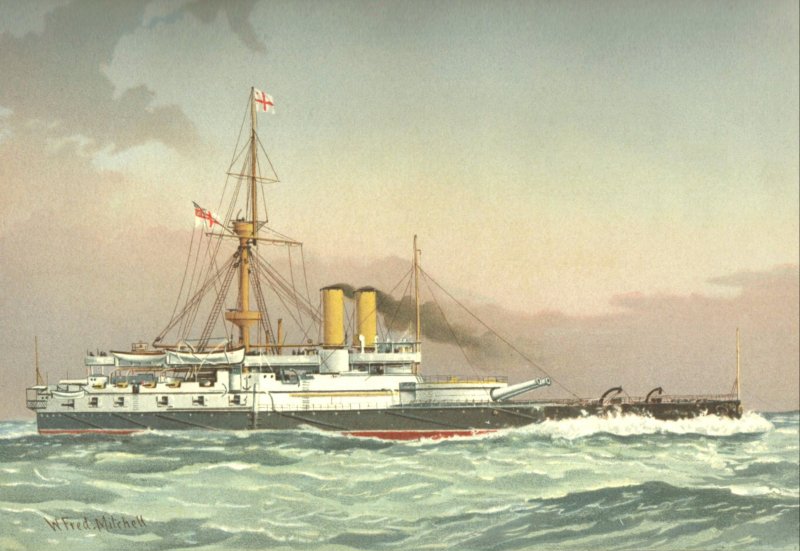
 en.wikipedia.org
en.wikipedia.org
 warisboring.com
warisboring.com
and the always superb Navy General Board website
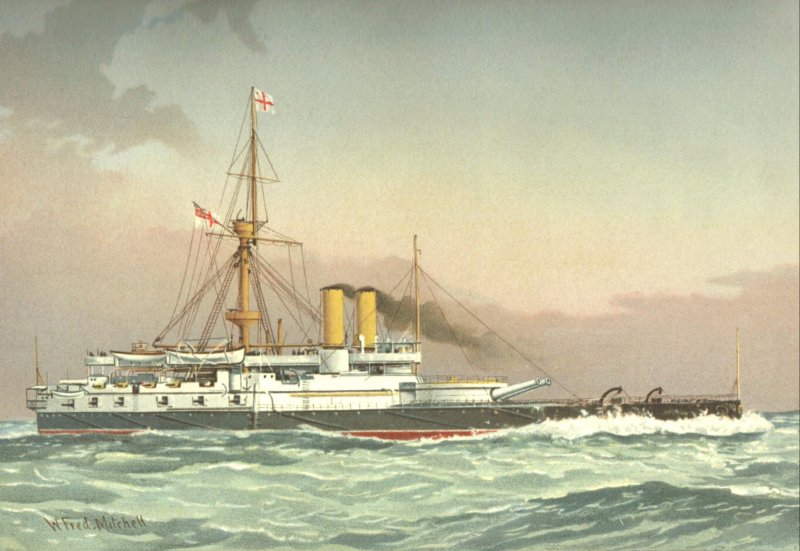
 www.navygeneralboard.com
www.navygeneralboard.com
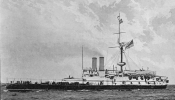
HMS Victoria
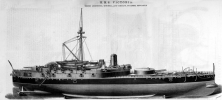
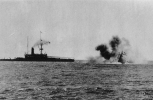
Victoria sinking after the collision, taken from HMS Collingwood. HMS Nile on the left.
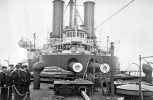
On 22 June 1893 while conducting maneuvers in the Mediterranean, HMS Victoria (flagship of the Mediterranean Fleet) was the lead ship steaming in parallel columns. Fleet Commander Vice Admiral Sir George Tryon ordered both columns to turn 180 degrees inward - but there was insufficient room and HMS Victoria was rammed by HMS Camperdown (led by Tryon's deputy, Rear Admiral Albert Hastings Markham). HMS Victoria immediately started to sink before capsizing, killing 382 men including Fleet Commander Tryon.
One of the takeaways was that Vice Admiral Tryon was to trying to revive a culture of initiative in a Navy that had not been tested in battle since Trafalgar and change the mindset of a Fleet and its officers that had become overly cautious. The executive officer of the Victoria at this time was John Jellicoe, who was to lead the Grand Fleet at Jutland in 1916.
Length: 340 ft, Beam: 70 ft, Displacement: 11,000 tons. Crew: 583.
A few good articles:

HMS Victoria (1887) - Wikipedia
Tag: political news | CafeMom.com
The site you’re looking for is no longer active. Here is other content you might enjoy.
and the always superb Navy General Board website

The Sinking of HMS Victoria - Navy General Board
At the height of their naval domination, the Royal Navy suffered one of their worst naval disasters. Matthew Wright examines the loss of HMS Victoria.
 www.navygeneralboard.com
www.navygeneralboard.com

HMS Victoria


Victoria sinking after the collision, taken from HMS Collingwood. HMS Nile on the left.

Pretty cool. Got me down a rabbit hole on the paint scheme of ships in that era. The Nelson Chequer started out yellow and black stripes (as seen on HMS Victory in Portsmouth), and later evolved to white and black as white became less expensive. The Chequer/checker part comes in as Nelson painted the gun doors Black so at distance a potential adversary could less easily determine whether or not the ports were open. Interesting.

 en.wikipedia.org
en.wikipedia.org

Nelson Chequer - Wikipedia
That article is kind of all over the place and I don't agree with it's conclusion. If ship based AA was so good then why at the end of the war was the USN executing a crash program to the AW of the fleet to more effectively counter the kamikaze threat. This included the development of SAMs and increased AA firepower for ships with the replacement of the 40mm with a dual 3"/50cal system that could use a VT fuse. In addition, he says the airstrikes against Kuritas center force at leyte only sank the musashi when in fact the airstrikes damaged numerous ships and caused Kuritas to turn around until IJN HQ reminded him he was on a suicide mission and to turn back around. Had halsey acted on the Intel that center force had resumed its course towards leyte gulf additional air attacks would have followed and destroyed more of Center Force. The conclusion of the article should be something like "ships equipped with advanced AA and sufficient ammo were more effective against air attack then other less capable ships."
I agree that the best time to use the Yamato class would have been in SOPAC but I'm not sure what you mean by "no AP bombs." Henderson had TBMs and SDBs (and eventually F4Us) that were more than capable of carrying AP bombs. Had a Yamato class made a sortie I imagine it would have been set upon by every airplane on henderson, on a carrier, and within the 5th AF. In addition it's passage would have been harried by PT boats, DDs, CL/CA with BBs equipped with radar directed 16" guns at the end of Savo. The Japanese tended to send in their forces piecemeal in SOPAC so I doubt they would have sent both Yamatos. At the end of the day none of the Japanese BB sorties did anything to change the strategic situation at Guadalcanal. They certainly made the infantry miserable but semi nightly BB bombardments weren't going to dislodge the Marines. If the first USN BBs didn't sink the Yamato I'm sure USN would have reprioritized fuel and sent in more. The end of this story is still that the USN wins at Guadalcanal and that at least one Yamato ends up in Ironbottom Sound.
Happened to catch this today. Drachinifel divided the AA fire into light (up to 30 mm), medium (30mm to 75mm), and heavy (76mm+). Another way of dividing the categories was that light could only engage the target at a range where the aircraft had already released its weapons, medium could engage beyond weapons release but was primarily to defend the ship itself and heavy AA could reach out and form an umbrella to support the fleet. The best in category was the 20mm Oerlikon (light), 40mm Bofors (medium), and 5"/38 calibre (heavy) - all of which were mounted on US ships. When combined with radar fire control and proximity shells, the US anti-aircraft defense was far and away better than anyone else's. As noted previously, one of the problems with Japanese AA fire was that they had no medium AA guns. Below is the video for those interested.
Last edited:
Max the Mad Russian
Hands off Ukraine! Feet too
Jerries were equipped with 30-mm, 37-mm, the same Boforses of 40-mm and some radars though of lesser capability than USN's. Didn't work good as good as your systems.
Mentioned the USS Alabama a few weeks ago, last week was the anniversary of the Battle of Cherbourg so perhaps CSS Alabama, a screw sloop of war. Perhaps the most famous raider in naval history sinking roughly 65 ships, it sank after a battle with USS Kearsarge off the coast of France on 19 June 1864. Although the 2 ships were roughly just over 200 ft, the Kearsarge was slightly faster and of 50% greater tonnage. The Alabama's primary weapons were an 8" smoothbore cannon firing 110 lb shells and a 7" rifled cannon firing a 68 lb shell - the Kearsarge had 2 11" Dahlgren cannons firing 166 lb shells
A few notes:
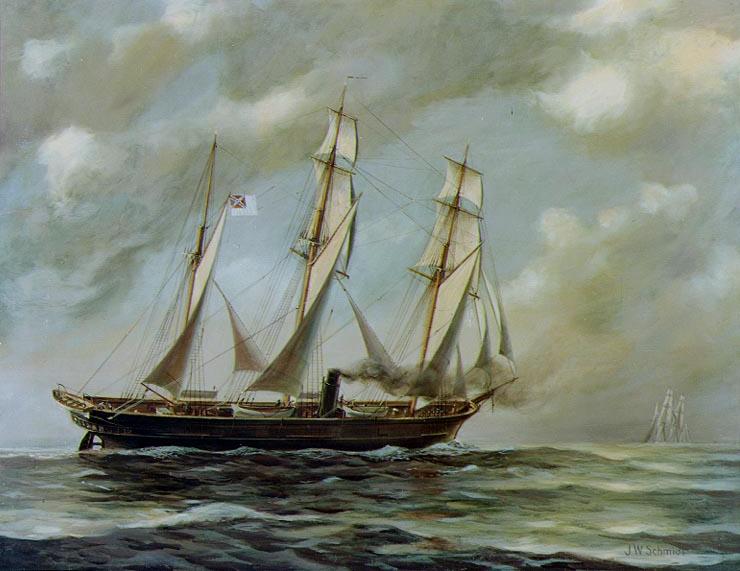
 en.wikipedia.org
en.wikipedia.org
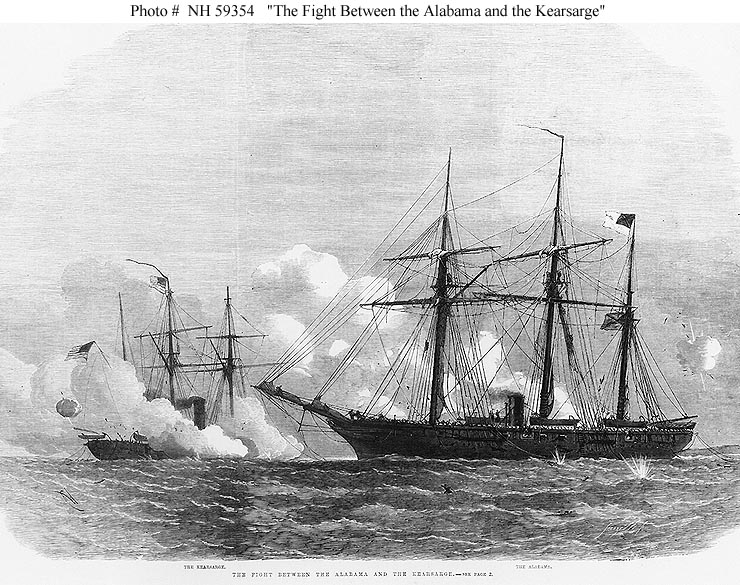
 civilwarmonths.com
civilwarmonths.com
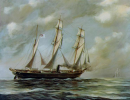
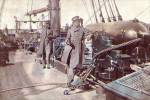
Captain Raphael Semmes, Alabama's commanding officer, standing aft of the mainsail by his ship's aft 8-inch smooth bore gun during her visit to Cape Town in August 1863. His executive officer, First Lieutenant John M. Kell, is in the background, standing by the ship's wheel.
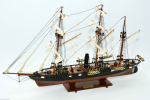
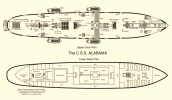
A few notes:
- the captain of the Alabama (Rafael Semmes) and the captain of the Kearsarge (John Winslow) shared a cabin aboard the USS Tabasco during the Mexican-American War and then served together again on the USS Cumberland.
- the Alabama got in an incredible lucky shot by its biggest cannon which hit the sternpost of the Kearsarge (which could have disabled its steering) but the shell did not explode - as the Alabama had been almost entirely at sea for 2 years and 75,000 miles sailed, it was noted that its powder and shells had deteriorated with roughly 1/3 not exploding
- the Alabama, built in Birkenhead, England and called ship 290 later launched unarmed as the Enrica, never stopped at a Confederate port
- not many ships have songs written for them, the Alabama has 2: one from South Africa called Daar Kom die Alibama and one from English folk band Bellowhead entitled Roll, Alabama, Roll (the Alabama had mostly an English crew)
- the Alabama was powered by both sails and two 300 HP steam engines driving a single propeller (their was a capability to remove the propeller with an internal deck and crane and thus the ship could move as a pure sailing ship.

CSS Alabama - Wikipedia

The Alabama Battles the Kearsarge
June 19, 1864 – A naval battle off the coast of France resulted in the destruction of the Confederacy’s most feared commerce raider on the high seas. The C.S.S. Alabama had terrorized commerc…
 civilwarmonths.com
civilwarmonths.com


Captain Raphael Semmes, Alabama's commanding officer, standing aft of the mainsail by his ship's aft 8-inch smooth bore gun during her visit to Cape Town in August 1863. His executive officer, First Lieutenant John M. Kell, is in the background, standing by the ship's wheel.


The last non-aircraft carrier capital ship (over 30,000 tons) laid down was not American- or British- or French - but rather Soviet on 31 Dec 1951 Stalin wanted a big gun ship and was determined to have it: the design for the Stalingrad class battlecruiser was approved and started - and then cancelled on 18 April 1953 shortly after Stalin’s death.
The ships would have been impressive, able to outgun the German Scharnhorst class and outrun the Bismarck class. Being almost 898’ long with a beam of 105’ and a max gross of 42,000 tons, the ship was longer, more slender and lighter than the Iowa class battleships. With 4 massive steam turbines generating 280,000 HP (33% more than the Iowas), the Stalingrads were expected to be capable of a blistering 35.5 knots. The armor, as expected of a battlecruiser) was light with a belt of only 7.1 inches although the torpedo defense as designed looked impressive. The projected main guns were 3x3 12” / 61 caliber rifles throwing a 1030 lb shell to an astonishing 58,000 yards (roughly 25% farther than the Iowas 16” / 50 caliber rifles).
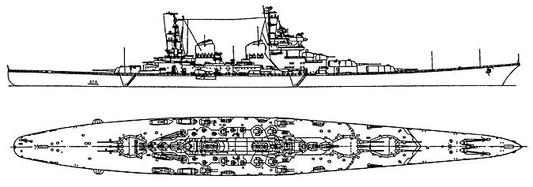
 en.m.wikipedia.org
en.m.wikipedia.org

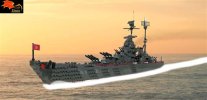
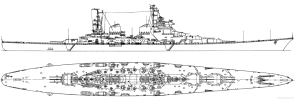
The ships would have been impressive, able to outgun the German Scharnhorst class and outrun the Bismarck class. Being almost 898’ long with a beam of 105’ and a max gross of 42,000 tons, the ship was longer, more slender and lighter than the Iowa class battleships. With 4 massive steam turbines generating 280,000 HP (33% more than the Iowas), the Stalingrads were expected to be capable of a blistering 35.5 knots. The armor, as expected of a battlecruiser) was light with a belt of only 7.1 inches although the torpedo defense as designed looked impressive. The projected main guns were 3x3 12” / 61 caliber rifles throwing a 1030 lb shell to an astonishing 58,000 yards (roughly 25% farther than the Iowas 16” / 50 caliber rifles).

Stalingrad-class battlecruiser - Wikipedia



Last edited:
That's farther than the original version of the Exocet missile could go- although you'd have to take a lot more shots for every hit "scored."The projected main guns were 3x3 12” / 61 caliber rifles throwing a 1030 lb shell to an astonishing 58,000 yards (roughly 25% farther than the Iowas 16” / 50 caliber rifles).

